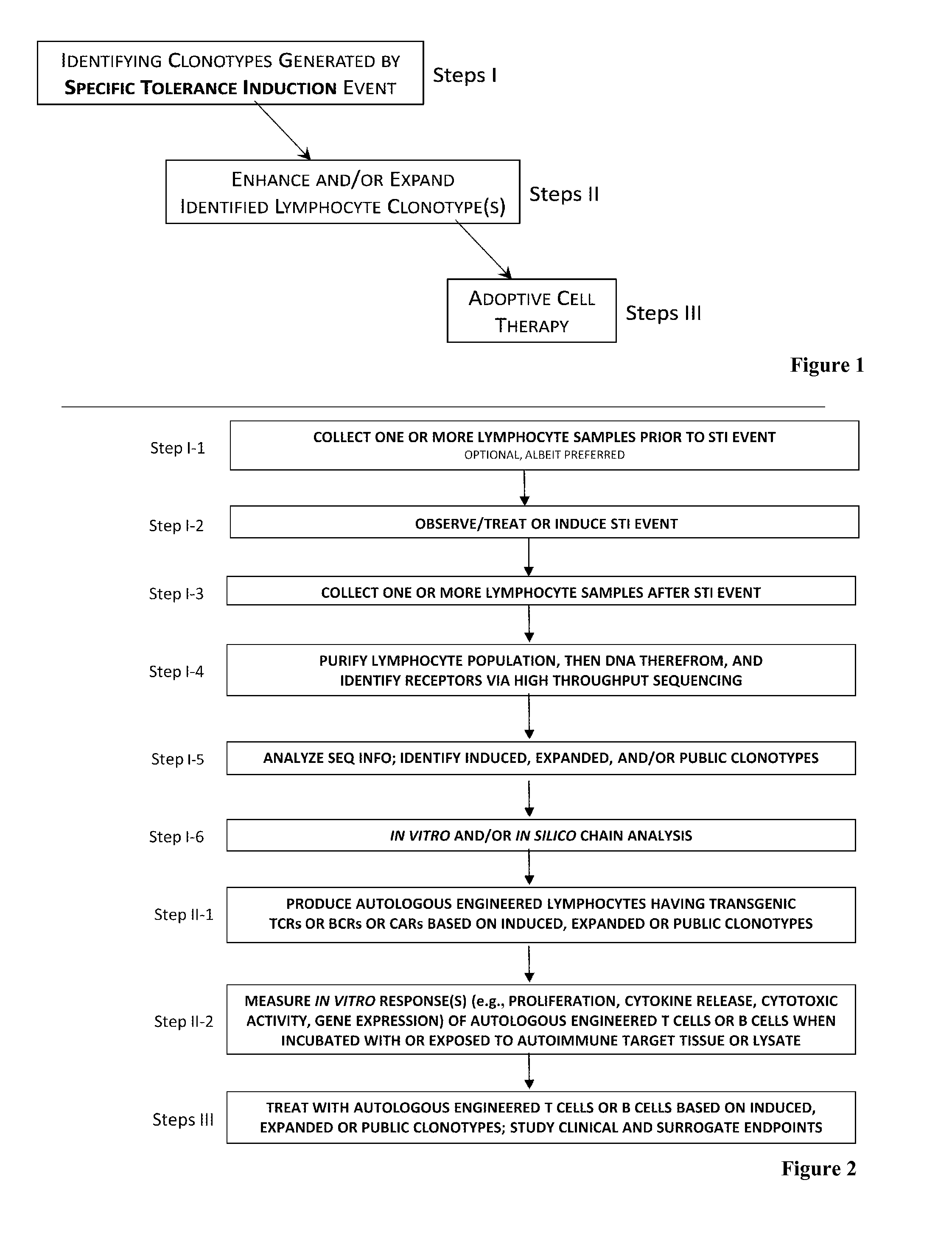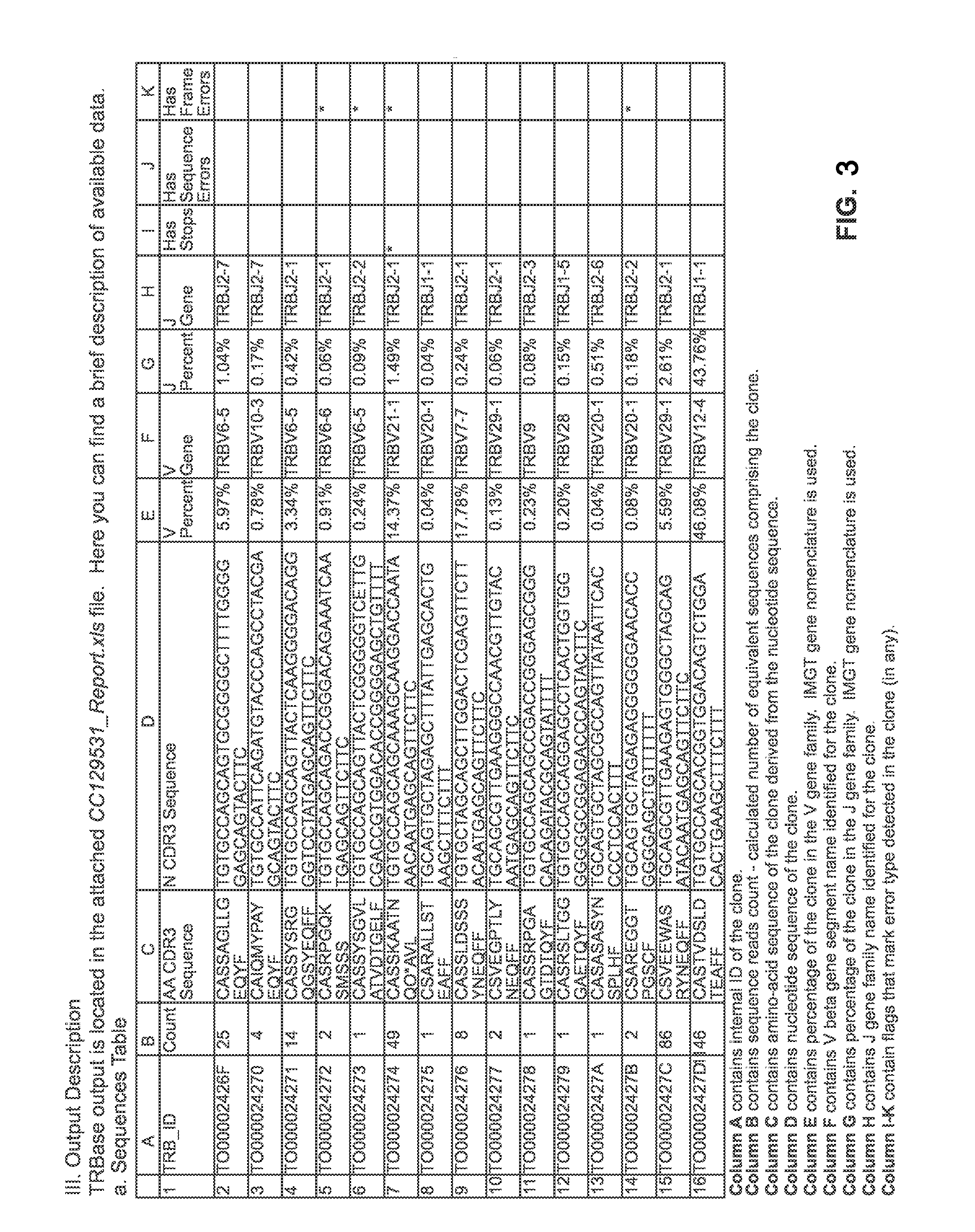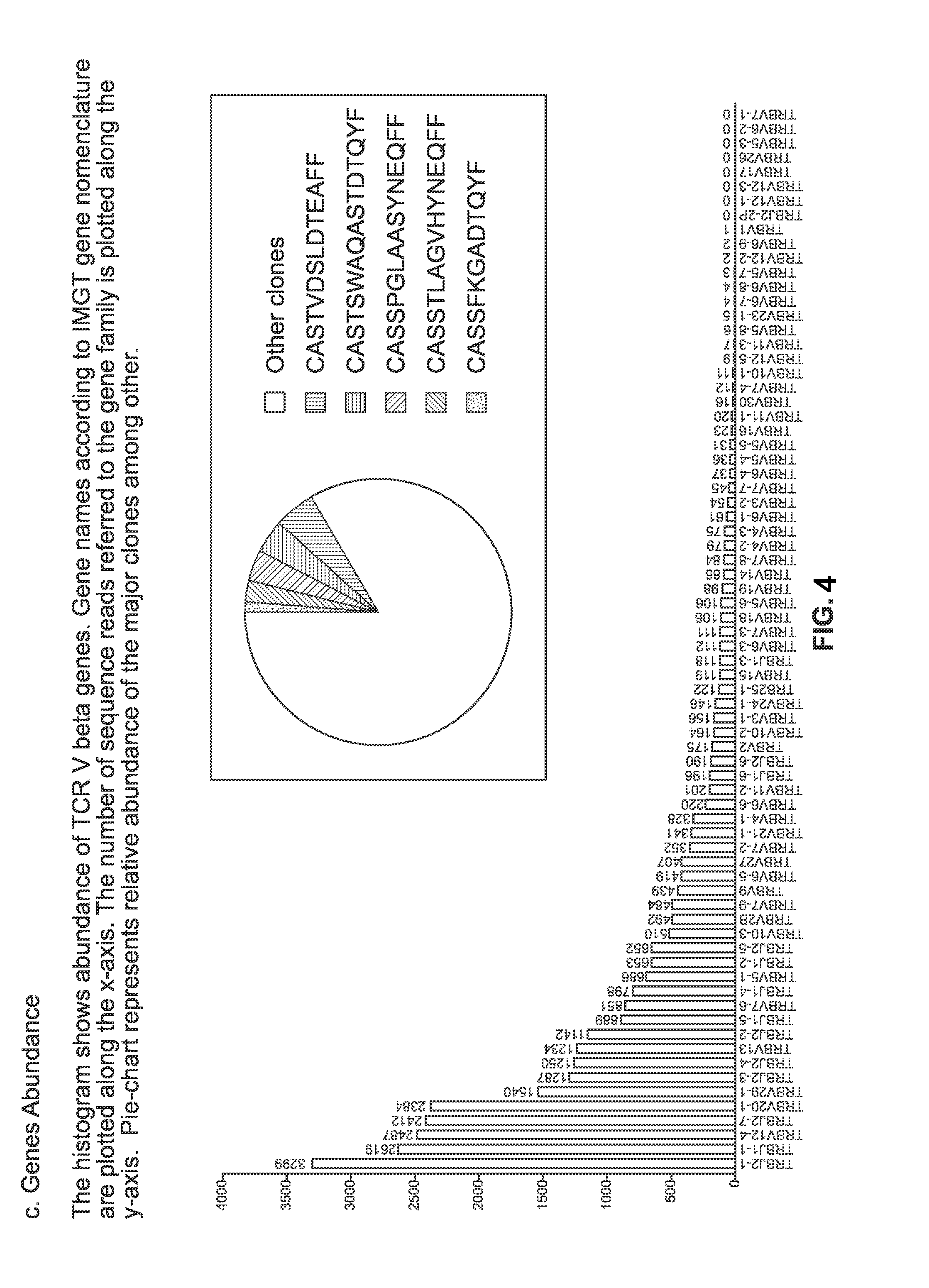Adoptive cell therapy with specific regulatory lymphocytes
a technology of specific regulatory lymphocytes and adoptive cells, applied in the field of medical immunology, can solve the problems of insufficient immunological attack on self, deleterious autoreactive immune cells, and insufficient treatment
- Summary
- Abstract
- Description
- Claims
- Application Information
AI Technical Summary
Benefits of technology
Problems solved by technology
Method used
Image
Examples
example 1
[0197]Cells employed for treating a patient afflicted with an autoimmune disease using methods and materials of the present invention are designed specifically for each patient based on a clonotype analysis that compares the receptors found on populations of lymphocytes obtained from the patient before and after s / he experiences a specific tolerance induction (“STI”) event. Example 1 illustrates alternative protocols for such clonotype analysis.
[0198]The populations of lymphocytes to be compared are collected from the patient prior to and five to 10 days after the STI event, which are respectively referred to herein as the “first lymphocyte sample” and the “second lymphocyte sample”. For STI events that are scheduled in advance, as in a scheduled surgery or vaccination or other treatment ordered by the patient's physician, obtaining the two samples of lymphocytes by venipuncture or other standard protocols are readily scheduled as well.
[0199]However, the present invention is also ef...
example 2
[0218]Once the information is available from the clonotype analysis in accordance with protocols set forth in Example 1, wherefrom we know the receptor sequences of the one or more induced clonotypes that arise subsequent to an STI event, we construct an autologous engineered T cell or B cell or a regulatory T cell or a regulatory B cell or expand numbers of cells of the identified clonotype using the induced clonotype information that we identify as described above. This engineered cell or expanded population of the identified clonotype is the basis of an immunotherapy which we pre-test in vitro for safety parameters and, if the pre-test passes, we use therapeutically in vivo for the patient from whom the cells were originally sourced. Example 2 illustrates protocols according to one embodiment of the present invention for generating autologous cells that may or may not have been engineered to express exogenous DNA, as noted below.
[0219]Using the information derived in Example 1 of...
example 3
[0231]This Example illustrates one protocol for treatment of psoriasis using the method of the present invention.
[0232]Psoriasis is a common autoimmune disease that affects the skin, causing red raised plaques covered with white scale. It is characterized by abnormal keratinocyte differentiation, hyperproliferation of the keratinocyte, and infiltration of inflammatory elements. Psoriasis is an immune-mediated disease which is commonly treated with immunosuppresive drugs.
[0233]One established treatment for psoriasis is PUVA therapy, which acronym stands for psoralen irradiated with ultraviolet A (“UVA”), and which is a form of photodynamic therapy. PUVA therapy is known to induce circulating regulatory T cells in patients with psoriasis. See Saito et al., J. DERM. SCI. 53:231-233 (2009); http: / / www.ncbi.nlm.nih.gov / pubmed / 19070466. Accordingly, such treatment creates an STI event usefully employed for the protocols of the present invention.
[0234]By sequencing blood samples from befor...
PUM
| Property | Measurement | Unit |
|---|---|---|
| Fraction | aaaaa | aaaaa |
| Fraction | aaaaa | aaaaa |
| Therapeutic | aaaaa | aaaaa |
Abstract
Description
Claims
Application Information
 Login to View More
Login to View More - R&D
- Intellectual Property
- Life Sciences
- Materials
- Tech Scout
- Unparalleled Data Quality
- Higher Quality Content
- 60% Fewer Hallucinations
Browse by: Latest US Patents, China's latest patents, Technical Efficacy Thesaurus, Application Domain, Technology Topic, Popular Technical Reports.
© 2025 PatSnap. All rights reserved.Legal|Privacy policy|Modern Slavery Act Transparency Statement|Sitemap|About US| Contact US: help@patsnap.com



